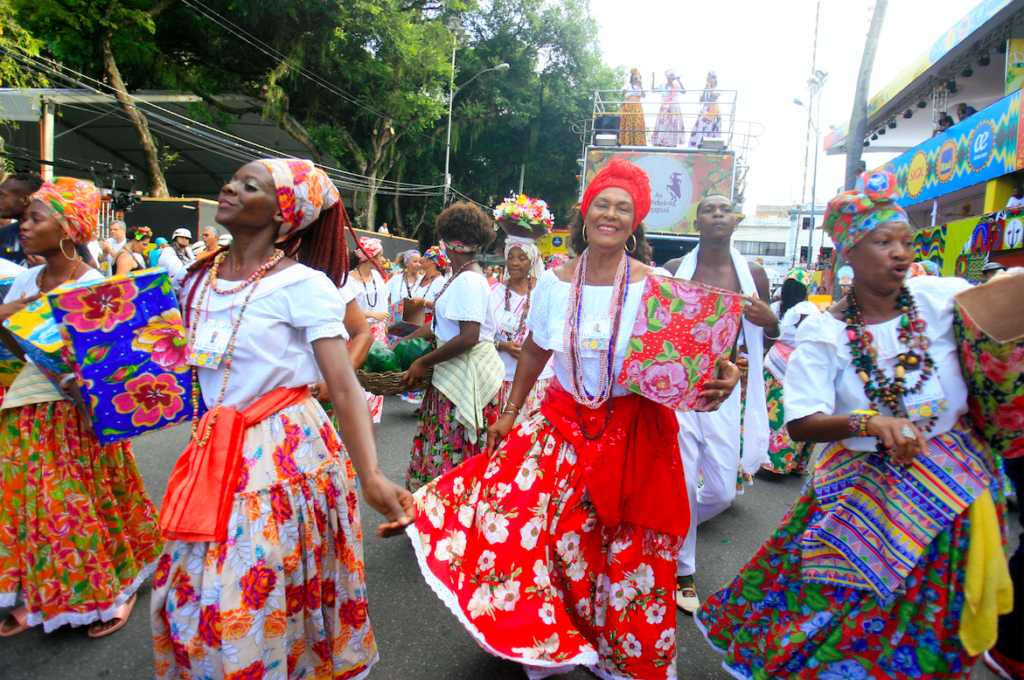The art of partying
The art of partying
Festivals, social gatherings, events and the world’s most famous Carnival are examples of what Brazilians love best—dancing, singing, drinking, socializing, basically partying all night long!
Informal gatherings and street parties
It might sound cliché, but it doesn’t take much for a party to start in Brazil. In fact, many lively gatherings are very informal. The starting point is often music—someone playing something in a public place just because, then random people joining with more music, singing or whatever. The result is one of these lively street or beach parties that epitomizes Brazil!
Brazilians are very social and love music. All it takes is a beat, and even a makeshift drum or tambourine is enough to get things started. It’s never long before the crowd joins in to sing along to the music.

Pre-Carnival, Carnival, and post-Carnival
In the southern hemisphere, December, January and February are summer months. They’re like June, July and August in the northern hemisphere—kids are off school, people tend to take time off, and even if Brazilian winters aren’t exactly harsh, there’s definitely a sunny, happy summer vibe during this time of the year.
Summer is prime party time, mostly because the Carnival rocks the entire country in February or early March. Technically, there are only five official days of Carnival, but Brazilians invented “pre-Carnival” (to warm up) and “post-Carnival” (to keep on partying).
Pre- and post-Carnival events are usually on weekends but they can be as lively and crowded as the real deal, especially in cities like Rio de Janeiro, Fortaleza, or Salvador.
Spotlight on Brazilian dances and music
Samba
Samba is a worldwide famous dance, rhythm and music style, and it remains very popular in Brazil, mostly in Rio de Janeiro. It’s often associated with Carnival but it’s a much broader style of music, fast or slow, with or without singing.
There are samba bars in Rio and it’s not rare to see “roda de samba”—musicians and an informal circle of passersby around them, singing and dancing along.
Pagode
Pagode is a subgenre of samba that is now very popular throughout Brazil. The main difference is the tempo and, according to Brazilians, lyrics tend to revolve around love stories.
Forró
Forró is a mix between Afro-Brazilian music and European polka. The key instrument is the accordion and this style is very popular in the “Nordeste,” where it was invented.
This intimate dance conducted in pairs is full of complex steps you can admire and practise in clubs and bars dedicated to this genre.
Funk
Funk has deep roots in Rio de Janeiro favelas. It was born in the 1970s as a new music style shedding light on various social issues. In a way, it’s a bit like rap or hip-hop music in Western Europe or North America.
Today, lyrics have been adapted to appeal to a wider audience—yeah, it’s mostly about sex! This is a very popular music style throughout Brazil.
Capoeira
Capoeira combines dance moves and martial arts strength. It was created by slaves brought from Africa to Brazil—they were forbidden to fight, so they invented this form of self-defence disguised as a dance. Capoeira practitioners never touch or hit each other, it’s mostly a lot of taunting and a fascinating flow of acrobatic moves.
Capoeira is a popular sport, especially in regions with more African heritage, such as Bahia, where street performances are very common.
Cultural anecdotes from a foreign eye
The “Lavagem do Bonfim” experience
The Lavagem do Bonfim is a major annual religious festival in Salvador, Bahia. It takes place on the second Thursday of January. The main event is a procession that starts in “cidade baixa,” the lower town, all the way to the church of Bonfim.
This is a religious festival, so I was fully expecting… well, a somewhat formal religious atmosphere.
This festival starts around 7 a.m. We showed up at 9 a.m.—the most formal part was already over and the procession had started to move. We joined it.
The procession was basically led by a series of “blocos,” street music groups, the same you’d see during Carnival. Most people in the crowd were already drinking beer. We were expecting a formal gathering but in fact, the eight-kilometre-long walk between the starting point and the Church of Bonfim is basically a giant party with beer and music!
Don’t leave the party early!
If you bump into a street party or observe people at a bar, you’ll most likely notice partygoers who look either bored or exhausted. “Why don’t they just call it a night and go home?” you may wonder.
Well, in Brazil, it’s not socially acceptable to leave the party earlier than planned. Going home early is… admitting failure, I guess!












 Français
Français English
English





0 comments
{{like.username}}
Loading...
Load more